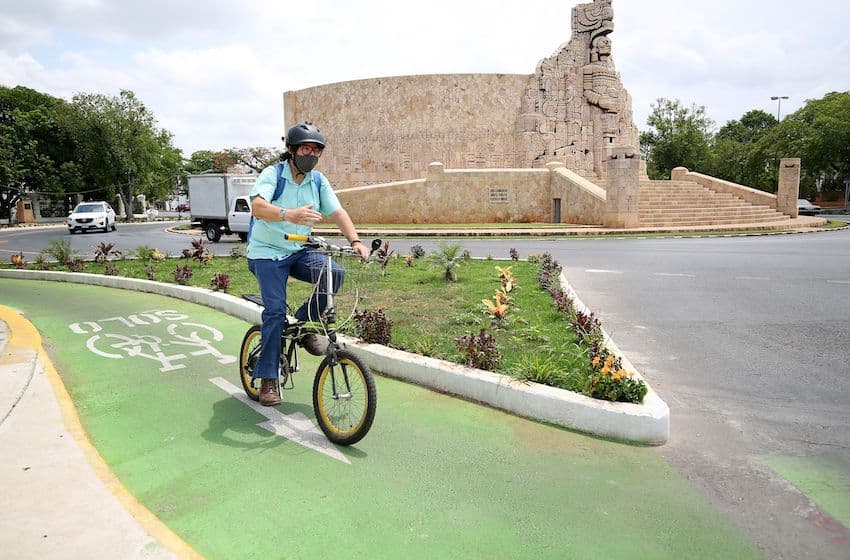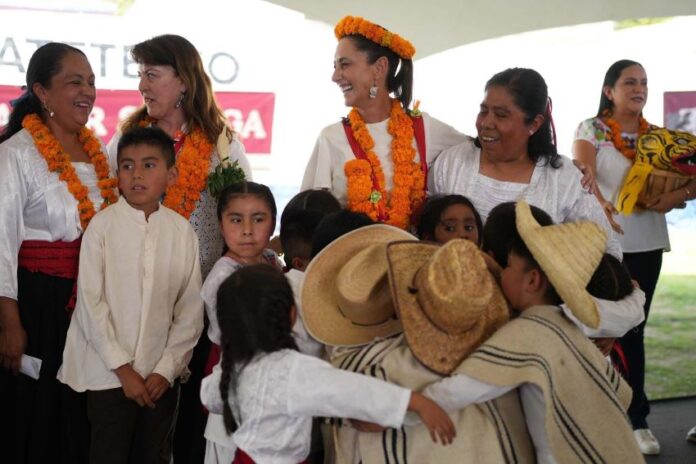President Claudia Sheinbaum was in the central state of Morelos over the weekend to celebrate the first public allocation from a new program that allows Indigenous communities throughout Mexico access to federal funds for infrastructure without the intervention of state or municipal governments.
Sheinbaum delivered 104 million pesos (US $5.5 million) to 82 Indigenous and Afro-Mexican communities in Morelos that will be directly managed by local assemblies under a 2024 constitutional reform package championed by former President Andrés Manuel López Obrador.

The landmark disbursement comes six months after Sheinbaum decreed the creation of the Presidential Commission on Justice Plans and Regional Development for Indigenous and Afro-Mexican Peoples.
The resulting program calls for 12.4 billion pesos (US $650 million) to go to ethnic communities to help them support projects such as drinking water systems, schools, housing, streets and sidewalks, sewage and electrification — each chosen by the communities themselves through local assemblies.
Depending on population and level of marginalization, individual communities will receive allocations ranging from 50,000 to 7 million pesos (US $2,600 to $367,600).
The money is being drawn from the Social Infrastructure Contribution Fund for Indigenous and Afro-Mexican Peoples (Faispiam), according to a government press release.
Indigenous and Afro-Mexican peoples “are not only the essence, the most intimate truth of the Mexican people, but are now recognized in the Constitution as subjects of public law,” Sheinbaum declared at the Saturday ceremony in Coatetelco, Morelos, alluding to 2024 reforms to Article 2 that grant these communities autonomy over resource allocation.
Ariadna Montiel Reyes, Mexico’s secretary of welfare since 2022, hailed the constitutional action being “transformed into reality.”
“Communities now control resources to combat poverty in marginalized areas,” she said.
Sheinbaum creates commission dedicated to ‘justice plans’ for Mexico’s Indigenous peoples
Adelfo Regino Montes, head of the National Institute of Indigenous Peoples (INPI), reported that all 82 communities in Morelos had already held assemblies to elect oversight committees and determine project priorities.
“These communities will leave a legacy for their children by targeting poverty through self-determined solutions,” he said.
Local leaders in Morelos welcomed the new era of autonomy.
“Our peoples will democratically decide how public funds are invested,” said Luis Eusebio Onofre Jiménez, president of Coatetelco, an autonomous Indigenous municipality and one of the few fishing communities in central Mexico — distinguished by a lake considered sacred since pre-Hispanic times.
The Faispiam program, which reserves 10% of Mexico’s federal infrastructure fund for Indigenous and Afro-Mexican communities, is being implemented nationwide.

Its aim is to benefit 15,217 communities in 27,792 locations: 14,742 Indigenous communities in 27,278 locations; 431 Afro-Mexican communities in 462 locations; and 44 multicultural communities in 52 locations.
Yuki Hueda Tanabe, a statistician at INPI, noted that the states with the largest number of Indigenous communities are Oaxaca (2,914), Chiapas (2,735) and Veracruz (2,584).
Sheinbaum’s administration is said to be facing pressure to replicate the Morelos model in Oaxaca, Chiapas and elsewhere.
In Yucatán, 300 million pesos (US $15.8 million) is earmarked for Mayan communities, while Baja California is to receive 11 million pesos (US $578,000), including 8 million pesos (US $420,000) for the Cucapá community.
The implementation of the program involves holding community assemblies, where residents elect an administrative board and an oversight committee. According to the newspaper Novedades Yucatán, there is a requirement that women are mandated to serve as treasurers.
As of June 3, 344 of 558 planned assemblies nationwide had occurred, involving over 22,000 participants, according to federal data.
Critics have questioned whether communities have sufficient administrative capacity, but officials are highlighting precedents like La Escuela es Nuestra (The School is Ours) program, which successfully decentralized education funds.
“This is a new chapter in community development policy,” said Yucatán Welfare Delegate Rogerio Castro Vázquez. “Indigenous peoples are now managers of their own development.”
Mexico News Daily
